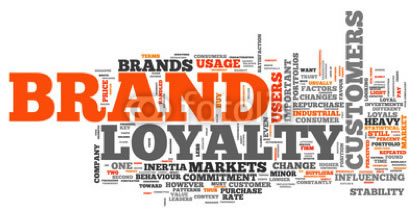Brand Creation Basics

Brand Creation is important. A brand is more than just an attractive Logo or a catchy tagline. These are actually only 9 second mind triggers to your image, promise, and core values of your organization. All these things are important for brand creation.
A brand generates good relationships, solidifies reputation, suggests specific activities, encourages expectations, and delivers a promise. Your brand should be a customer’s vote of confidence for your company (and its people’s) identity and personality and everything these stand for; as well as a reflection of your management and employees. Makes no difference if you are a large or smaller business, there is an perspective, image, mind trigger it portrays that should be different and stands out from the “rest of the herd”. Thus it is important that you build your brand correctly.
Note: even though several steps are presented for brand creation, it is important that you thing of your brand as an integration of its various elements but just a collection of separate elements.
1. One brand at a time
This is especially true for a start-up. No matter how well-funded, there will always be a shortage of resources. Focus all of your branding energy and resources on building up a single brand; not try to create separate brand identities for the company and for each of its products. Multiple brands will diffuse your energy and resources, and may confuse customers.
2. Start from the beginning
So many companies, when branding, start the brand process in the middle, or do not complete all of processes. Starting from the beginning when doing brand creation means that you have some concept of the following:
- Your Mission
- Your Vision
- Marketing strategy
- Understand your business, product or service competencies
Make sure you first assess who your existing and potential customers are;
Find out what they like and what they don't;
Find out how your customers and your employees feel about your business. Reliable? Caring? Cheap? Expensive? Luxurious? No-frills
Be able to define how favorably your business is viewed by customers and potential customers. This is an important aspect of brand creation.
Research helps you understand your target client’s perspective and priorities, anticipate their needs and put your message in language that resonates with them. It also tells you how they view your firm’s strengths and your current brand. You should develop buyer personas. Buyer personas are examples of the real buyers who influence or make decisions about the products, services or solutions you market. They are a tool that builds confidence in strategies to persuade buyers to choose you rather than a competitor or the status quo.
3. Develop All the Elements of a Brand
Remember a logo is not your brand.Your brand should consist of the following elements:
Develop your brand position – This is known as your positioning statement or your North Star statement. As the North Star would help early mariners navigate, your positioning statements helps you navigate your brand development. The Brand Position is the part of the brand identity and value proposition that is to be actively communicated to the target audience and that demonstrat es an advantage over competing brands. It describes what your organization does and for whom. It also includes the unique value proposition, and promotes aspects of your company/product that lend credibility.
Your positioning statement should be used in EVERY communication where your organization is described. Choose the version that best meets your size and space needs, but ALWAYS use the exact language here.
- 25-Word (Elevator) Positioning Statement
- 50-Word Positioning Statement
- 100+ Word Positioning Statement
Create Your Brand Promise - The Brand Promise is the single most important thing that your company promises to deliver to your clients—EVERY time. Your brand promise reflects what clients, employees, and other stakeholders should expect from every interaction with your organization. Every business decision should be weighed against this promise to be sure that a) it fully reflects the promise, or b) at the very least it does not contradict the promise.
The Brand Promise is a one-sentence description of the value that your company or organization promises to deliver to our customers/clients.
Develop your brand personality (traits)- Brand traits and values list what the company wants its brand to stand for—its core values and beliefs. Brand Traits illustrate what you wants your brand to stand for – your core values and beliefs. Think about brands you love. Those brands commonly stand for something (or against something) and connect with their customers emotionally.
Develop your brand story- Storytelling is not something that modern day marketers developed. It has been a part of human communications as far back to the time our ancestors lived in caves. Storytelling is not just for kids. Corporate storytelling produces strong benefits and results for the adult business. Storytelling is a pivotal part of marketing, communications, and business. Without it, consumers find it difficult to connect and advocate for something. Storytelling can and should be used in any business because it can drive loyalty, advocacy, and trust.
4. Manage Your Brand
- Keep all your staff involved in your brand and your business. Your staff will need to feel a part of it and believe in it. Discuss your brand values regularly with your staff so they are clear about them. Encourage them to offer suggestions to improve your systems so the brand values can be more easily delivered.
- Your customers' response to the brand are critical. Monitor them on a regular basis and continually review how your brand values are communicated to them. Get regular feedback from friendly customers and find out if what your business is doing for them matches the expectation your brand creates. Ask dissatisfied customers or former custom ers too — you learn useful lessons about your brand through honest criticism.
- Review your products, services and systems to make sure they efficiently back up your brand message.
